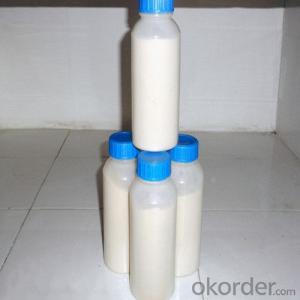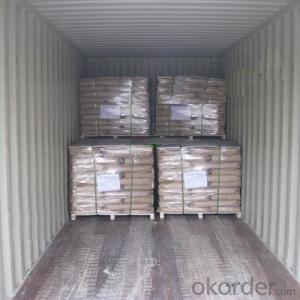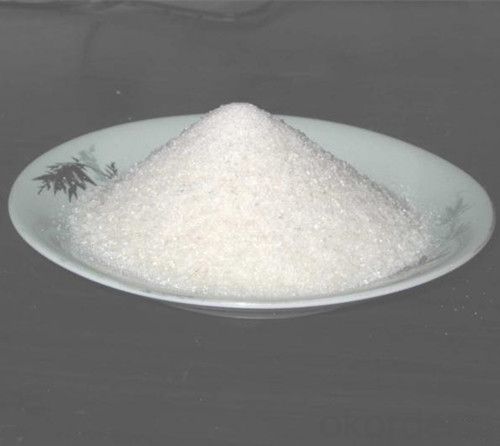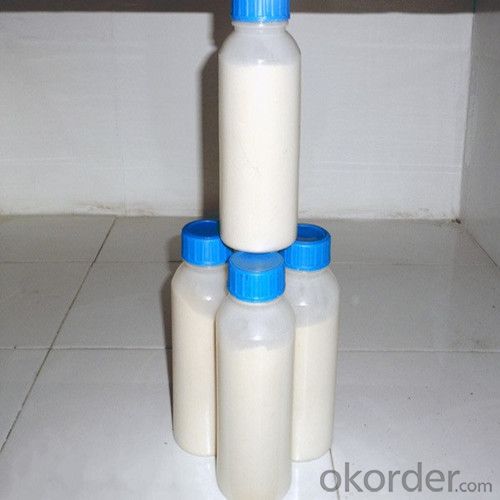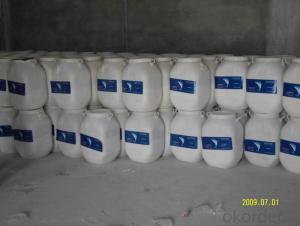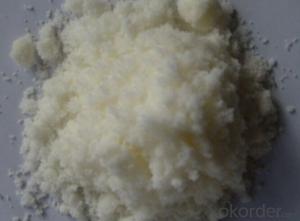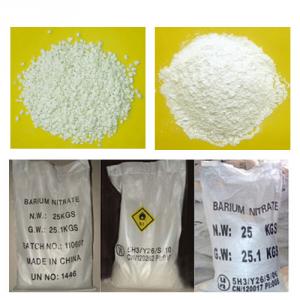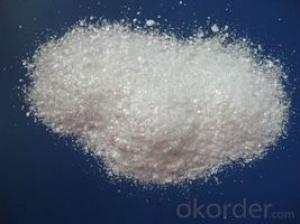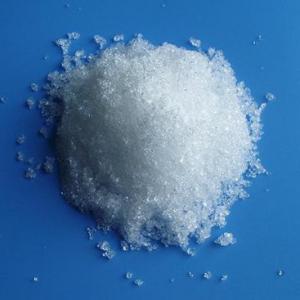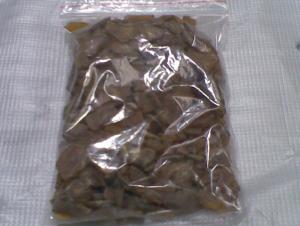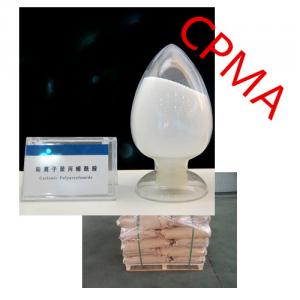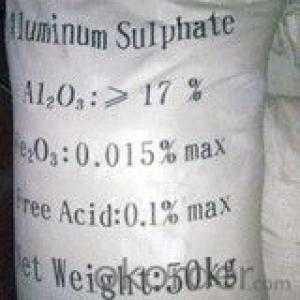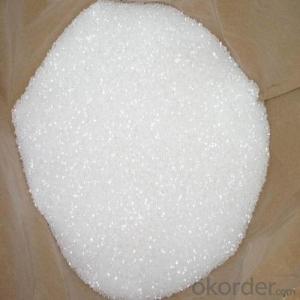Sodium Nitrite Industrial Grade Consturction Chemical
- Loading Port:
- China main port
- Payment Terms:
- TT OR LC
- Min Order Qty:
- 1000 kg
- Supply Capability:
- 500000 kg/month
OKorder Service Pledge
OKorder Financial Service
You Might Also Like
Industrial Sodium nitrite
Description:
Alias: Sodium nitrite,food grade
English Name: Sodium nitrite
CAS: 7632-00-0
EINECS: 231-555-9
Molecular formula: NaNO2
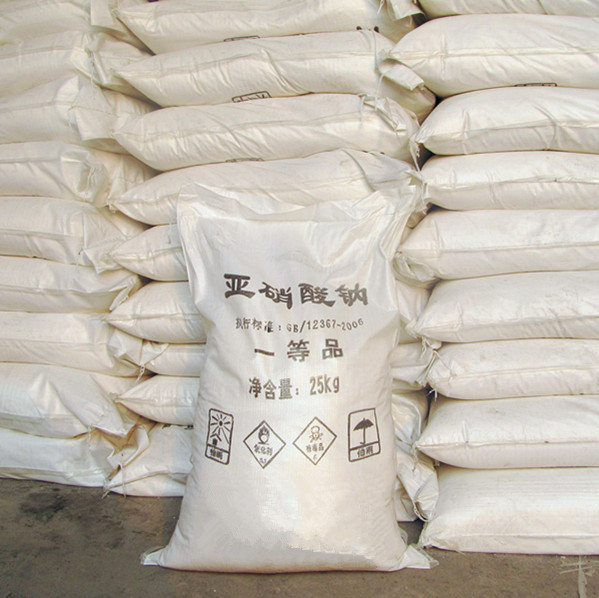
Performance:
Sodium nitrite is white or light yellow crystal, relative molecular weight is 69.0, specific gravity is 2.168, with no
smell, light saline taste, easy deliquesce. It has fine water-solubility and hygroscopicity. Its aqueous solution is with
alkalescence and PH range is 9. It is easily soluble in liquid ammonia, light soluble in alcohol, carbinol and diethyl ether.
Melting point is 271℃, decomposition temperature is 320℃. It has oxidability and reducibility.
Use:
it is used as metal heat treatment agent, plating inhibitor, steel corrosion inhibitor, bleacher, mordant, for the production
of dye intermediate, pigment, chemical analysis reagent, sterilization of instruments, colour former and preservative.
Index: GB/T2367-2006
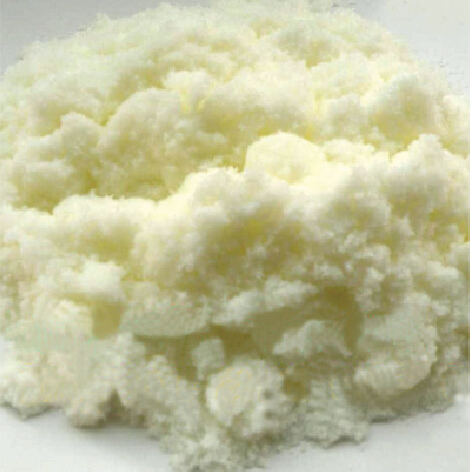
main index | unit | high-class product | top quality product | qualified product | food grade |
Sodium nitrite | %≥ | 99.0 | 98.5 | 98.0 | 99.0 |
sodium nitrate | %≤ | 0.80 | 1.00 | 2.0 | - |
chloride | %≤ | 0.10 | 0.17 | - | 0.10 |
water insoluble | %≤ | 0.05 | 0.06 | 0.10 | 0.05 |
moisture | %≤ | 1.4 | 2.0 | 2.5 | 1.8 |
Packing
Plastic bag lined woven bag. Net wt.25/50kg.
FAQ
1.Q: What is MOQ?
A: Our MOQ is 1 TON.
2.Q: Could you offer free sample?
A: We can provide free samples to you for quality testing.
3.Q: What about your packing?
A: For liquid: Flexitank, or IBC tank 1000L
For powder:Woven fabric bag with plastic film liner( 25kg or 1000kg)
Clients’ packing is workable.
4.Q: How about your productive capacity?
A: 150000 tons/Year.
5.Q: What is your delivery time?
A: Within 7 days after received deposit or L/C at sight.
- Q: Are biological enzymes harmful to humans?
- Recently, people are increasingly interested in the use of enzymes in cosmetics, not only from a technical point of view, but also from the market prospects and consumer awareness of these seemingly effective raw materials. Enzymes have been used in laundry detergent for more than 20 years and are linked to long-term performance with the ability to provide and enhance strong stain removal capabilities. According to some speculation, their positive response in the market may be interpreted as satisfying the aging population, the pursuit of younger needs to enhance the performance of cosmetics. The natural shedding process of the skin is controlled by the enzymatic reaction, and the specific enzyme dissolves the cell desmosomes that release the dead epidermal cells. These enzymes are produced in dead keratinocytes. Their active sites are phagocytosed with mercapto groups, and cleavage of peptide bonds in a manner similar to that of thio-glycolic acid and mercaptoalanine (plus derivatives) when the hair is broken. Use these types of enzymes and it
- Q: How does catalyst aid a chemical reaction?
- A catalyst will lower the activation energy of a reaction, and hence allow it to happen faster. The actual mechanisms vary widely. Two mechanisms are: 1/ formation of intermediate compounds, which can then decompose into the catalyst and the required product 2/ provision of a large surface area for adsorption, so the reactant molecules can come into contact sooner.
- Q: Will the chemical catalyst not reduce that?
- Why is it done? Although the catalyst does not react chemically, the catalyst itself is deteriorated and is not always used
- Q: the heterogenous catalyst ZSM-5 IS used to convert ?
- Zeolite-based heterogeneous catalysts are used by industrial chemical companies in the interconversion of hydrocarbons and the alkylation of aromatic compounds. A very good example is the zeolite ZSM-5. This zeolite, developed by Mobil Oil, is an aluminosilicate zeolite with a high silica and low alumininum content. Its structure is based on channels with insecting tunnels. The aluminium sites are very acidic. The substitution of Al3+in place of the tetrahedral Si4+ silca requires the presence of an added postive charge. When this is H+, the acidity of the zeolite is very high. The reaction and catalysis chemistry of the ZSM-5 is due to this acidity. The ZSM-5 zeolite catalyst is used in the petroleum industry for hydrocarbon interconversion. An example use is in the isomerizations of xylene- from meta to para-xylene. The acidic zeolite promotes carbocation isomerizations. There are two suggested mechanisms for this type of isomerizations. Firstly shape may play a role. Perhaps para-xylene has a shape which allows it to diffuse rapidly through the zeolite structure, whereas as meta-xylene takes longer to pass through the zeolite and thus has more opportunity to be converted into the para-xylene. Secondly, is that the orientation of reactive intermediates within the zeolite channels favors specifically para-xylene.
- Q: What kind of chemical substances can seriously damage the ozone layer, as a catalyst or reactants can be?
- Freon decomposition of free radicals. The destruction of our ozone is mainly caused by him. Chlorine free radicals are also available.
- Q: Is the chemical reaction rate constant related to the amount of catalyst used?
- The catalyst has a certain amount of suitable range, the general factory production of some substances (such as ammonia), the amount of catalyst used is limited, to achieve a value after no greater role. So the reaction rate constant is independent of the amount of catalyst used
- Q: What is the difference between biological and chemical catalysts?
- Biological catalysis involves an enzyme usually working in conjunction with a co-enzyme. These enzyme/co-enzyme systems are highly specific and are usually only effective for one reaction. Catalysis of non biological reactions is usually much more general and any one catalyst will be effective in many reactions.
- Q: Explain how catalysts help to reduce costs in industrial processes !?Thanks
- They speed up a reaction, allowing you to get more product more quickly and remain unchanged, therefore you can use them over and over again.
- Q: Are the catalysts for upgrading the weapons components that i may have a few of, or very rare ones?
- catalyst's cannot be used apart from transforming items. They will be greyed out at all other times. They always say in the description can be used as a catalyst as well. btw, are you using 36 sturdy bones or vibrance ooze to get the 3x multiplyer strait up? oh yeah, never ever use any item at all that says can be sold for a premium. Always sell those items, they are worth lots of money. And when you start buying components, only ever buy particle accelerator, perfect conductor or ultra compact reactor. Perfect conductor gives least bang for $$$ out of the 3, whereas ultra compact reactor gives most bang for $$$. And the sturdy bones and vibrance ooze for multiplyer purposes. Hope this helped :)
- Q: What kind of chemical reaction requires a catalyst?
- Too much reaction, and basically related to the industry
Send your message to us
Sodium Nitrite Industrial Grade Consturction Chemical
- Loading Port:
- China main port
- Payment Terms:
- TT OR LC
- Min Order Qty:
- 1000 kg
- Supply Capability:
- 500000 kg/month
OKorder Service Pledge
OKorder Financial Service
Similar products
Hot products
Hot Searches
Related keywords

